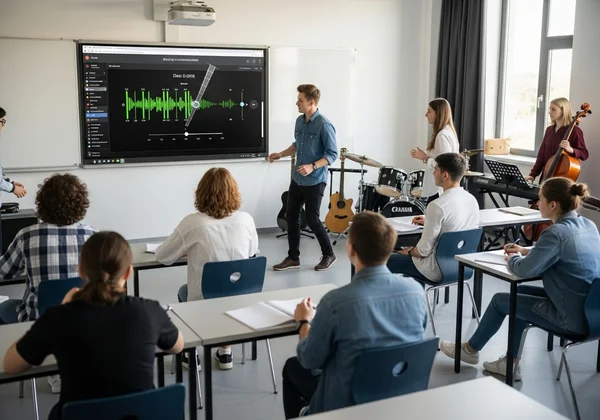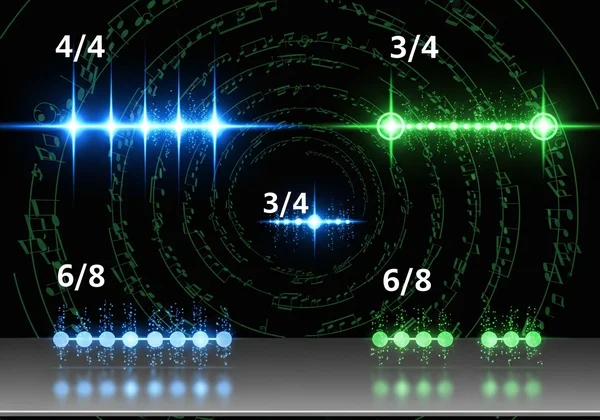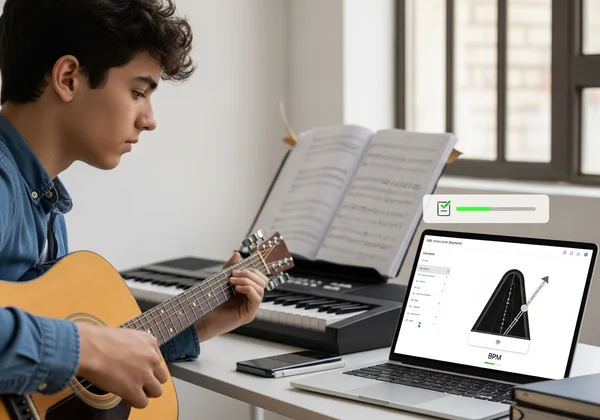Online Metronome for Teachers: Classroom & Assignments
As music educators, we are constantly seeking innovative tools to make fundamental concepts like rhythm engaging and accessible. The steady tick of a metronome is the heartbeat of musical progress, yet traditional methods can sometimes feel static or uninspiring for today's students. How can I make rhythm practice more dynamic and effective for my students? The answer? A versatile, free online metronome that can transform rhythm instruction in your classroom and at home. At Metronome, we've developed a powerful resource designed specifically to support music teachers and empower their students.
Let's dive into practical strategies for seamlessly integrating our free, customizable metronome into your teaching. We'll explore how to invigorate group exercises, demystify complex concepts, and streamline homework assignments. By the end, you'll see how this simple digital tool can become an indispensable part of your pedagogical toolkit. Ready to elevate your rhythm instruction? Visit our online metronome tool and start exploring its powerful features today.
Leveraging Your Online Metronome in the Classroom
The modern classroom thrives on interaction and visual learning. A browser-based metronome can be easily projected onto a whiteboard or shared on screen, instantly creating a focal point for the entire class. This shared reference ensures every student is locked into the same tempo, making your online metronome classroom a space of rhythmic unity and focus.

Engaging Group Rhythm Exercises with Visual Cues
One of the greatest advantages of a digital metronome is its visual component. Many students are visual learners, and the pulsing indicator on our online metronome provides a powerful reinforcement to the audible click. This dual-sensory input helps solidify the beat in a way sound alone cannot.
You can lead a variety of group rhythm exercises with this setup. Start with simple call-and-response clapping patterns, with the class echoing your rhythm against the steady beat. The visual cue helps students anticipate the downbeat and maintain timing. For younger students, turn it into a game: have them march, hop, or step in time with the visual metronome. This kinesthetic learning connects rhythm to physical movement, deepening their internal understanding of pulse and tempo. Our tool acts as an excellent visual metronome to keep everyone perfectly synchronized.
Demonstrating Complex Time Signatures and Beat Subdivisions
Explaining the difference between 4/4, 3/4, and 6/8 can be challenging. An online metronome makes these abstract concepts tangible. With a few clicks, you can switch between meters and use the tool's customizable accent feature to emphasize the first beat of each measure. Let your students hear and see the distinct feel of a waltz in 3/4 versus a march in 4/4.
Furthermore, mastering beat subdivisions is a crucial step for any developing musician. Our time signature metronome allows you to set subdivisions, providing clicks on eighth or sixteenth notes. You can have the class clap the main beat while you vocalize the subdivisions, or vice versa. This practice helps students internalize how smaller rhythmic units fit within the main pulse, building a solid foundation for tackling complex passages in their repertoire.

Effective Rhythm Teaching with Digital Tools
Beyond group activities, an online metronome is a powerful tool for developing individual musicianship. The ultimate goal is to help students internalize a steady sense of time so they can eventually play with rhythmic integrity without a metronome. Effective teaching rhythm strategies focus on using the tool as a guide to build that internal clock.
Building a Strong Internal Rhythm Sense in Students
A common pitfall is students becoming overly reliant on the metronome's external beat. To foster a true internal rhythm sense, introduce exercises that challenge them to maintain the tempo on their own. One classic technique is the "silent bar" method.
Set the metronome to a moderate tempo, perhaps 100 BPM. Have students play a simple scale or exercise along with the beat for four measures. Then, use the mute feature (or simply stop and restart the metronome) for the next four measures while they continue to play, trying to stay perfectly on time. Turn the metronome back on for the following four measures to see if they remained in sync. This exercise forces students to listen internally and actively maintain the pulse, transforming the metronome from a crutch into a training partner.

Utilizing Tap Tempo for Collaborative Discovery
How do you find the tempo of a song you're listening to? The tap tempo feature is a fantastic tool for discovery and ear training. Instead of just telling students the BPM of a new piece, turn it into an interactive game. Play a recording and have students use their phones or classroom tablets to access the tap tempo feature on our platform.
Ask them to tap along with the pulse of the music. After about 15-20 seconds, have them compare their results. This not only engages them in active listening but also teaches them a practical skill used by professional musicians and producers every day. It fosters a deeper connection to the music they play and listen to, encouraging them to think critically about tempo as a key expressive element.
Streamlining Student Assignments with an Online Metronome
Consistency is key to progress, and that means effective home practice. An online metronome bridges the gap between the lesson and home, ensuring students work with the same precision and focus. Using a metronome for music teachers allows you to create clear, measurable goals for your students' assignments.
Setting Clear Tempo Goals for Homework Practice
Vague instructions can hinder effective practice. Instead of vaguely telling a student to "practice their scales," you can provide specific instructions like: "Practice the C Major scale in quarter notes at 75 BPM, ensuring every note is perfectly with the click." This removes guesswork and establishes a clear standard for success.
Because our homework practice tool is free and accessible on any device, there are no barriers for your students to start practicing. Students don't need to buy a physical device or download an app. They can simply navigate to the website and start practicing immediately. This accessibility ensures that every student can follow your tempo instructions precisely, leading to more productive practice sessions.
Encouraging Consistent Daily Practice and Tracking Progress
One of the most effective ways to build speed and accuracy is through gradual, methodical practice. You can structure assignments to facilitate this by encouraging consistent daily practice. For example, assign a challenging passage with a starting tempo of 60 BPM and a goal tempo of 90 BPM.
Instruct the student to increase the tempo by 2-4 BPM each day they practice, but only after they can play the passage perfectly three times in a row at the current speed. This "tempo ladder" approach makes progress feel manageable and rewarding. The student can see their improvement in a quantifiable way, which is a powerful motivator. Using a reliable BPM tool is essential for this kind of structured practice.

Empowering the Next Generation of Musicians
From a full-class rhythm game to a detailed practice assignment, a free online metronome is one of the most versatile tools in a modern music educator's arsenal. By integrating our free online metronome into your teaching, you provide students with a reliable, accessible, and feature-rich resource that supports their growth both in and out of the classroom. You can foster a deeper understanding of rhythm, build their internal clock, and empower them with the skills to practice efficiently and independently.
The journey to rhythmic precision starts with a single click. We encourage you to open our free metronome online during your next class or when planning your next assignment. Discover the difference it can make in your students' musical development.
Frequently Asked Questions for Music Educators
How can an online metronome effectively improve student rhythm?
An online metronome improves student rhythm by providing instant, objective feedback. The consistent audible click and visual indicator train the brain and muscles to perform in perfect time. It helps students identify and correct tendencies to rush or drag, builds rhythmic accuracy for complex passages, and serves as an honest measure of their progress. Using the advanced features of our online metronome, like subdivisions and accent customization, helps them internalize complex rhythmic structures.
What is a good starting BPM for beginner music students?
For most beginner students learning a new piece or technique, a slow and deliberate tempo is best. A range of 60-80 BPM (Beats Per Minute) is an excellent starting point. This speed is slow enough for them to think about fingerings, posture, and tone quality without feeling rushed. It allows them to process the music and align their playing precisely with the beat. As they gain confidence and accuracy, they can gradually increase the speed using our simple metronome BPM tool.
How do I help my students use Tap Tempo to find a song's beat?
Teaching students to use the Tap Tempo feature is simple and fun. First, have them open the metronome tool on a device. Play a song with a clear, strong beat. Instruct them to listen for a few seconds to find the pulse, then start tapping the "Tap Tempo" button consistently along with that beat. Advise them to tap for at least 10-15 seconds for an accurate reading. This exercise trains their ear and makes them active, analytical listeners.